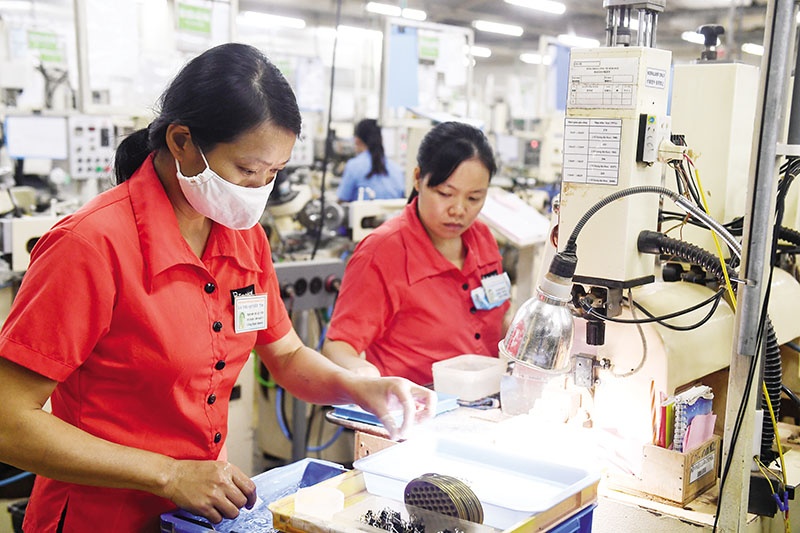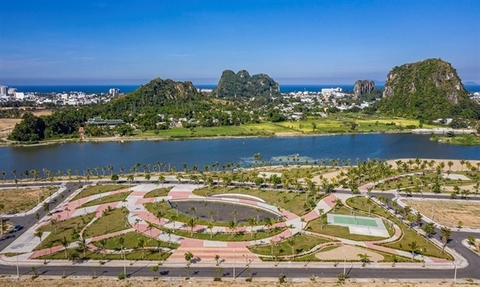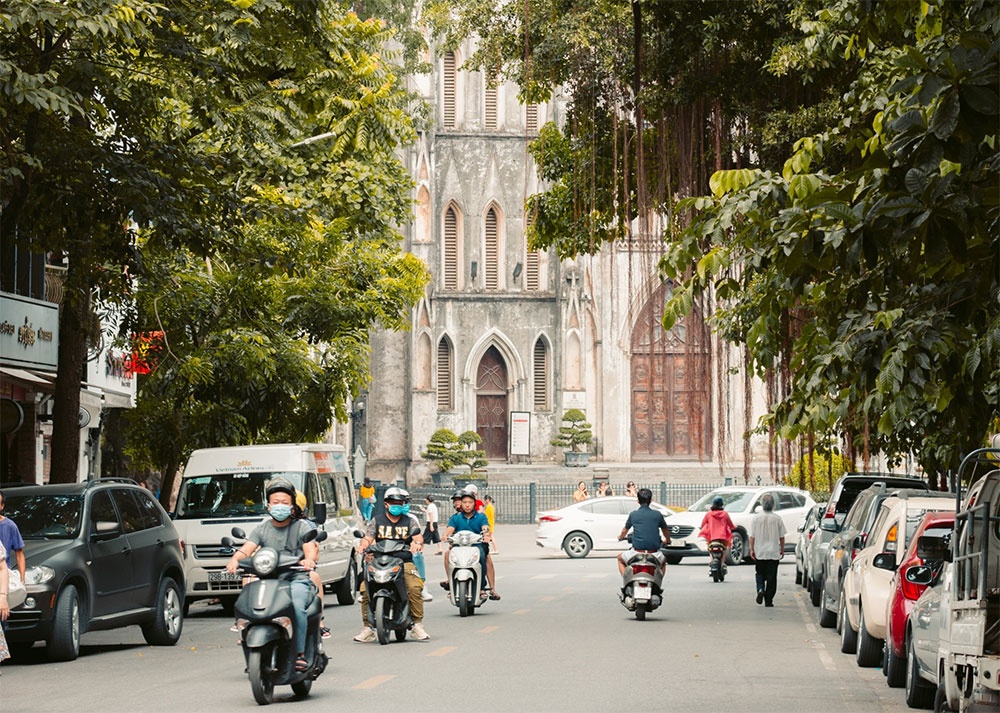Preparation needed to deal with 2023 economic headwinds
Preparation needed to deal with 2023 economic headwinds
It is anticipated that 2023 will be a challenging year for the world economy, particularly Vietnam. The question is how to counteract the upcoming headwinds.

In recent months, it has become apparent that foreign organisations have increased their growth estimates for 2022 while simultaneously adjusting their growth forecasts for Vietnam's economy in 2023.
A few days ago, HSBC increased its growth projection for Vietnam in 2022 from 7.6 per cent to 8.1 per cent. In addition to describing 2022 as a year of rapid economic recovery and stating that Vietnam remains one of Asia's leading growth economies, HSBC raised concerns about the economy's risks. Therefore, this bank predicts that Vietnam's economic growth will decrease to 5.8 per cent in 2023 rather than the previously predicted 6 per cent.
Similarly, the Asian Development Bank (ADB) raised Vietnam's growth prediction for this year to 7.5 per cent, much higher than the 6.5 per cent number given in September 2022, while lowering its growth forecast for 2023 by 0.4 percentage points to 6.3 per cent.
Explaining the revision of Vietnam's growth prediction for 2023, HSBC said that growing trade barriers would pose hurdles to Vietnam's economic development in 2020.
According to HSBC, export growth slowed significantly in October 2022 after increasing by more than 17 per cent annually over the first three quarters of 2022. Even November saw a considerable reduction in the past two years compared to the same month the previous year.
According to the Ministry of Planning and Investment (MPI),the country's import-export turnover declined by 7.8 per cent in November compared to the same month in the previous year, when exports fell by 8.4 per cent.
"The primary cause is the contracting export market; orders for textiles, footwear, electronics, and furniture fell even during the Christmas shopping season; input prices are high, and input supply is in limited supply," said Tran Quoc Phuong, Deputy Minister of Planning and Investment.
As a result of declining exports, industrial output has shown symptoms of stalling. In November, the index of industrial output climbed by just 5.3 per cent, less than the growth rate in October and less than half the pace in September.
This highlights why Vietnam's manufacturing industry's purchasing managers index achieved 47.4 points in November 2022, down from 50.6 points in October.
The World Bank has raised concern as exports and domestic consumption, two key development drivers for Vietnam, have slowed. MPI is likewise concerned about this, particularly when cash flow and liquidity issues make it impossible for companies to operate.
Moreover, according to MPI, reducing labour and working hours is reappearing, particularly in labour-intensive industries and key exports such as textiles, footwear, wood processing, electronics, food, services, and tourism, negatively impacting people's income and quality of life. The primary cause is that businesses must scale down production and operations due to a lack of orders and rising input prices.
Conquering headwinds
Vietnam's economy faces several dangers and obstacles, particularly considering that the global economy is expected to become tougher in the next year. Since the US is Vietnam's largest export market, the American recession could significantly impact on the nation's economy.
While there are no strong indications that China may reopen its economy in the near future, Vietnam's other main economic partner, Japan, has recently had inflation at a 40-year high. The economy of Europe is also experiencing challenges.
This situation poses a significant problem for Vietnam since the miracle of exporting more than $700 billion in 2022 is likely to be disrupted. "Vietnam must also prepare for the hibernation of exports," HSBC said.
According to Andrew Jeffries, director of the Southeast Asia Energy Division of ADB Vietnam, headwinds will emerge in 2023, notably monetary tightening, a decline in global demand for Vietnamese exports, and bond market anomalies.
Vietnam's policy measures must balance reducing inflation and preserving economic development while safeguarding the operation of the financial system.
Last week, Tran Tuan Anh, Chairman of the Central Economic Commission, also talked about this during the 5th Vietnam Economic Forum.
Tuan Anh said, "The worldwide downturn in trade and investment is having severe effects on economies, particularly emerging nations like Vietnam."
Tuan Anh cited difficulties such as the instability of the real estate market, the capital market, and the resistance to shocks as internal economic challenges that Vietnam must address.
Andrea Coppola, chief economist for the WB in Vietnam, also said that China, Europe, and the United States were experiencing a time of weakness because "monetary policy tightening exacerbates headwinds for emerging markets and developing economies."
The headwinds seem to be increasing in strength. The question is how Vietnam will overcome the headwinds of 2023.
"Vietnam's policy actions must find a compromise between containing inflation and preserving economic development while guaranteeing the proper operation of the financial system," Jeffries said.
In the meantime, Coppola advised Vietnam to manage the currency rate flexibly, unify monetary and fiscal policy, and address liquidity issues in the banking and real estate sectors. The nation must enhance its oversight and debt settlement regulatory frameworks to decrease risks and restore investor confidence.
























